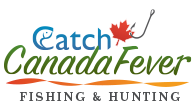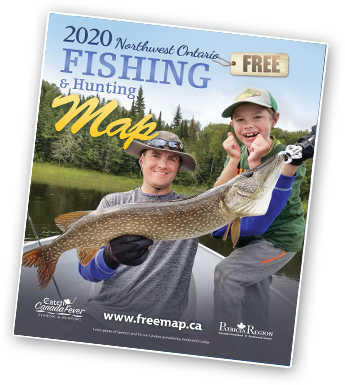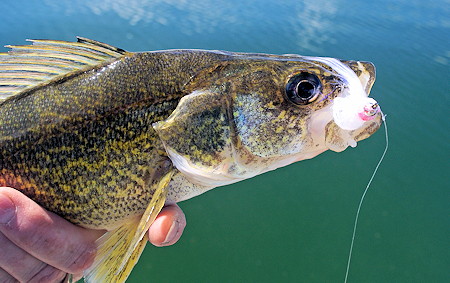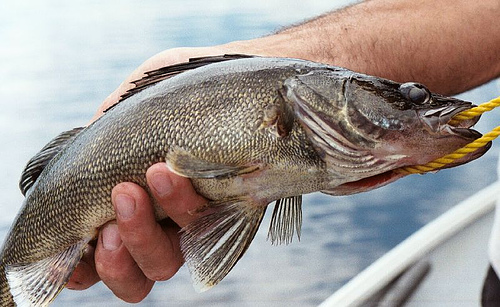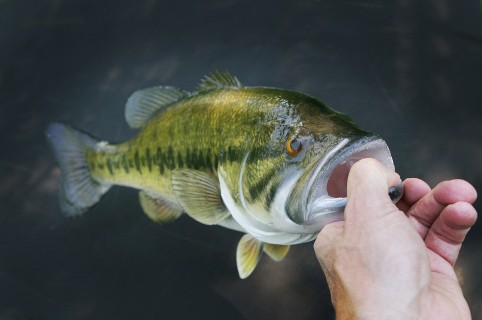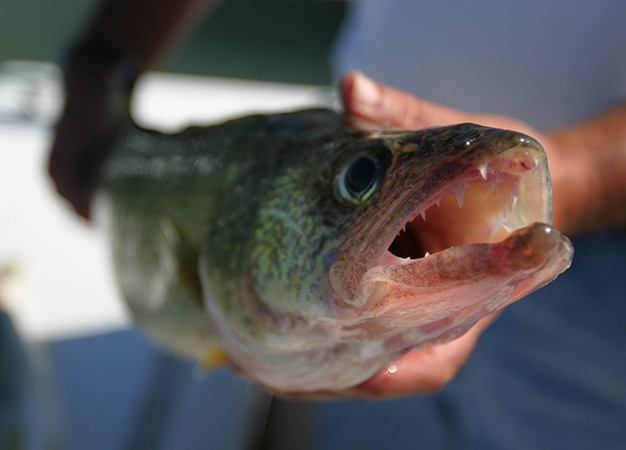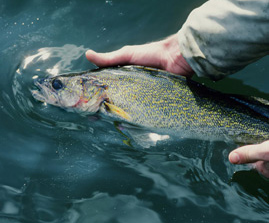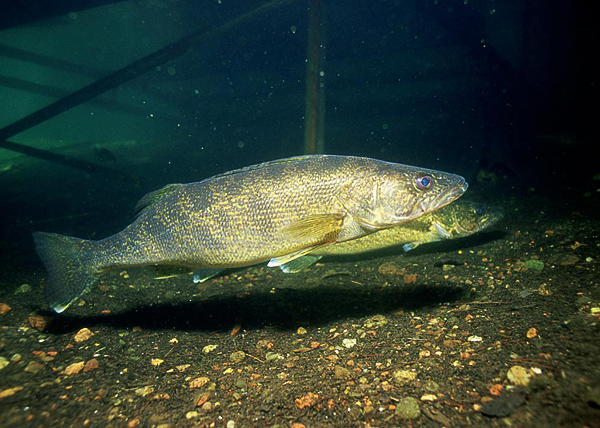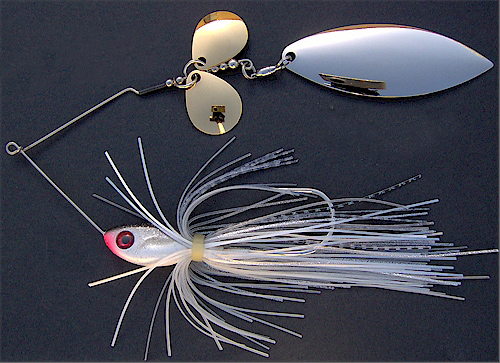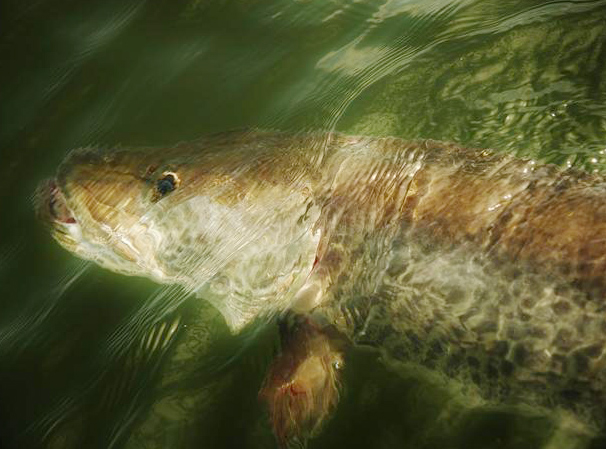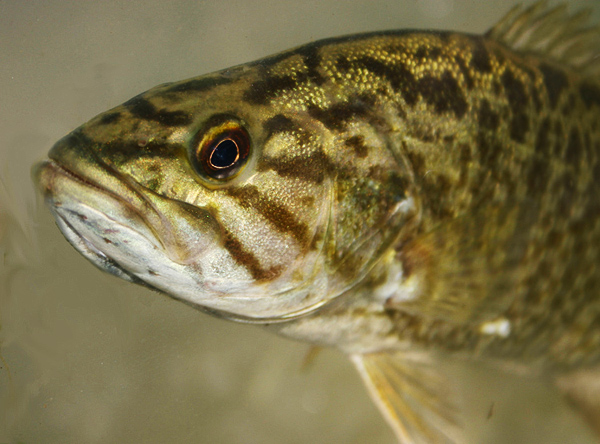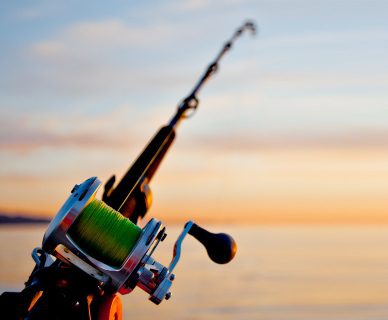Slip bobbers are a simple way to present live bait to walleyes, but even simple techniques must be performed correctly. I’ve perfected my bobber tactics by listening and fishing with professional walleye anglers and fishing guides in the midwest and Canada. Putting their experience and information together, I believe I’ve distilled the best form the best.
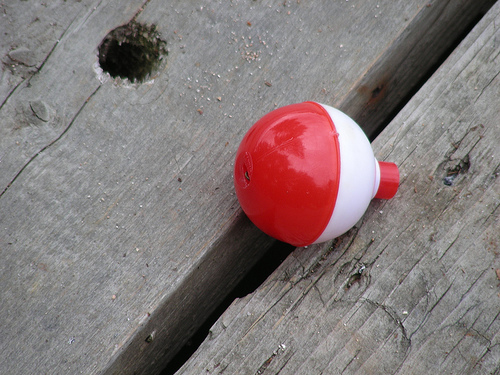 The main purpose of any bobber is to hold the bait up off the bottom. But because bobbers are moved by wind and waves, the bait is also presented over more water. And because the bait is suspended on a straight, vertical line, the angler may detect even subtle strikes.
The main purpose of any bobber is to hold the bait up off the bottom. But because bobbers are moved by wind and waves, the bait is also presented over more water. And because the bait is suspended on a straight, vertical line, the angler may detect even subtle strikes.
Typically, slip bobbers are made of wood or plastic; pear, cigar or pencil shaped. The main advantage of a slip bobber is that the line passes freely through a center tube, or some other outside attachment which allows the angler to fish as deep as he wants.
A piece of rubber band, string, or manufactured bobber stop goes on the line above the bobber. This stops the line from sliding through the bobber which determines at what depth the bait will ride.
A small bobber stop (I prefer knotted string) can be set well up the line to allow deep fishing. When you reel in, the bobber itself slides down to the terminal end of the rig but the tiny stop knot is retrieved through the rod guides and onto the reel spool. If the knot is small enough and tied tightly enough it should not interfere with the next cast. You also may adjust depth by simply sliding the knot up or down the line.
When tying the stop knot, a trick is to slide a split straw over the line and tie the knot around that. Now slide the knot off the straw and onto the line at the desired location, then tighten. Other components of the rigging include a small bead that goes the stop and bobber, and below the bobber go weights and then finally a hook or jig. In order of appearance, the bobber stop is placed on the main line first, followed by the bead, the bobber, the weights (either split shot, or a rubber core sinker) and then the hook or jig.
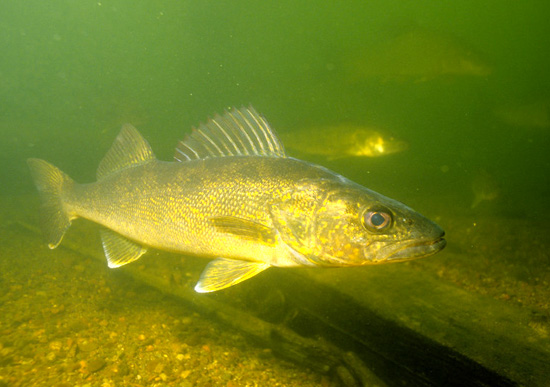 Some of the best advice you can receive on slip-bobber walleye fishing is to use over-sized hooks, high-visibility line, and, of course, the bobber rigging and weight placement.
Some of the best advice you can receive on slip-bobber walleye fishing is to use over-sized hooks, high-visibility line, and, of course, the bobber rigging and weight placement.
While walleyes may be found anywhere on a flat, they tend to hold in weeds and rocks with poor water clarity, and they usually congregate on the edges, usually within 2 feet of bottom. This is a precise fishing method, so you want to spot your structure and make the presentation in the right place.
In lakes where weeds are somewhat sparse, the important feature on flats is scattered piles of small rock. Walleyes may be found just about anywhere bait fish roam, but rock is a key holding element.
Proper positioning of the boat can be key for slip bobbers. When fishing the flats in mild evenings, it is recommended you anchor or drift so the bobbers ride with the wind ahead of the boat.
A couple of refinements that can be made to your slip bobber technique include staggering the split shot beneath the bobber, by as little as 5 or 6 inches. Clumping the shot together creates a kind of hinge on which the line and bait may float up behind the weight. Because of this, if a pickerel were to just lightly suck the prey into it’s mouth, the bobber wouldn’t register the hit. When more weight is needed for fishing deeper, shorten the distance between the weights and jig. When using a floating jig head, leave less than a foot of line between the jig and the last weight, because you want the bait to be riding just off bottom.
Using slip bobbers to nail walleyes certainly isn’t the only way to go after walleyes, but when done properly, It may just be the best.

